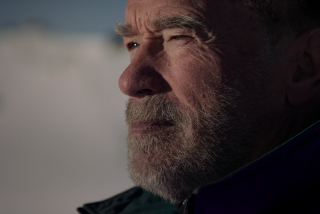Trayvon Martin and George Zimmerman: A portrait of the Retreat
- Share via
If you were living in the gated Florida town house community called the Retreat at Twin Lakes last February, chances are you received a copy of the homeowners association newsletter.
It would have reminded you to properly dispose of your cigarette butts, and to keep strollers, bikes and other personal items off of your porch. It would have updated you on an extensive sprinkler-repair program, which was proving to be costly, and which was being financed with HOA dues.
You would have learned that the Sanford Police Department had just announced an increased patrol in the neighborhood, with more patrol cars rolling through, as well as stepped-up bike patrols of front and backyards.
DOCUMENTS: Read the Neighborhood Watch newsletters
If you had been the victim of a recent crime, you would have been advised to call the police -- and then to call the neighborhood watch captain, George Zimmerman.
A number of issues of Zimmerman’s neighborhood newsletter, “Retreat Reflections,” were included in the 183 pages of discovery documents made public Thursday in Zimmerman’s second-degree murder case. They were certainly not the most newsworthy items in the stack. More immediately compelling was the fact that the Sanford police essentially blamed Zimmerman for recklessly engaging in the Feb. 26 encounter with Trayvon Martin, the unarmed black teenager Zimmerman had decided was a suspicious character in the neighborhood.
Notable, too, was the fact that a postmortem medical exam found that Martin had marijuana compounds in his blood and urine.
But the newsletters offer a compelling glimpse of daily life in a community that became the scene of a slaying that garnered worldwide attention -- and a glimpse at the high-profile role Zimmerman played there.
The Retreat, like many suburban planned communities, comes across as a place of quotidian pleasures, with announcements of soapbox derby races and nearby farmers markets. It was also a place of strict rules, with an Architectural Review Committee that regulated the residents’ aesthetic whims.
“If you are considering making changes to the exterior of your town home, including changes to the mulch or landscaping, you MUST submit the proper forms and documentation to the ARC for review and approval,” one newsletter entry read.
In June 2011, the public safety concerns of the neighborhood seemed minor: A news item that month said that the HOA would be hiring Sanford police to enforce the speed limit and parking rules.
But in the September 2011 issue -- next to a clip-art cartoon character peering through a giant magnifying glass -- the newsletter announced: “We have recently experienced an increased incidence of crime within the community including three break-ins in the past month, which is why having residents committed to being members of the Neighborhood Watch and reporting suspicious activities is so important. We must send a message that we will not tolerate this in our community!”
It urges anyone with information on the break-ins to call the police. It also suggests calling Zimmerman for “updates, safety tips” and notifications of “any suspicious activity.”
The neighborhood watch group, it reported, held a meeting with Sanford police officers on Sept. 22 to discuss crime-prevention strategies. The newsletter urged residents to consider becoming block captains. “Please keep your eyes open,” the newsletter stated. “If you see something suspicious or out of place, report it!”
A couple of weeks after the fatal shooting, documents show, a Sanford police officer, Joseph Santiago, contacted several of Zimmerman’s neighbors.
“All stated he was a quiet neighbor,” Santiago wrote in an offense report dated March 6. “All stated he would encourage them to attend community meetings [and] all stated [he] never harassed or bothered anybody.”
The documents also show that a Sanford police investigator, Trekell Perkins, received a phone call from an anonymous woman two days after the shooting who said that Zimmerman had “racist ideologies,” and was “fully capable” of instigating a deadly confrontation.
Police noted that no other information was obtained to corroborate the claim. Zimmerman’s friends and family have maintained that he is not prejudiced.
In a March 13 request for the issuance of a capias to authorize Zimmerman’s arrest, police noted that “on August 3, August 4 and October 6, 2011, and February 2, 2012, George Zimmerman reported suspicious persons, all young Black males, in the Retreat neighborhood to the Sanford Police Department. According to records checks, all of Zimmerman’s suspicious persons calls while residing in the Retreat neighborhood have identified Black males as the subjects.”
The records also show that police interviewed a witness who saw the two men scuffling. The witness said he saw a black man in a hoodie on top of a white or Latino man, throwing punches in a “mixed martial arts” style.
Zimmerman has pleaded not guilty, and said that he shot Martin in self-defense. He is currently free on bond, awaiting trial, and in hiding, due to numerous threats on his life.
ALSO:
Skechers lawsuit: How to get your piece of $40-million payout
Census Bureau: Minority births outnumbered whites for first time
Trayvon Martin case: Evidence shows an injured George Zimmerman
More to Read
Sign up for Essential California
The most important California stories and recommendations in your inbox every morning.
You may occasionally receive promotional content from the Los Angeles Times.










